The current edition of Designers & Dragons has a box detailing the history of “Dungeons, Dragons, and Comics” (The 70s, pages 86-91) and another on “Dungeons, Dragons and Computers” (The 70s, pages 76-79). The following is intended as a minor companion to those two, talking about how Dungeons & Dragons briefly kept alive the dream of portal fantasy. It was written for eventual publication in Designers & Dragons: The 10s, as part of a history Rowan, Rook, and Deckard, the publishers of DIE: The RPG (2022).
Portal fantasy has gained huge popularity in the 21st century thanks to isekai manga and anime and to LitRPG stories, but the idea of people from our own Earth being swept away to fantasy lands far predates those trends and even intersects with the early history of Dungeons & Dragons (1974).
The beginnings of the subgenre lie in classics such as Alice’s Adventures in Wonderland (1865) and A Connecticut Yankee in King Arthur’s Court (1889). Because fantasy was largely considered children’s literature at the time, portal stories prospered in some of the twentieth century’s most influential YA books, among them The Wonderful Wizard of Oz (1900), Peter Pan (1904), The Lion, The Witch and the Wardrobe (1950), and their successors. Pulp and sword-and-sorcery authors such as Edgar Rice Burroughs, Robert E. Howard, L. Sprague de Camp, Fletcher Pratt, and H.P. Lovecraft flirted with the idea too, skinning their portals as time travel, psychic projection, symbolic logic, and travel to Dreamlands. When fantasy exploded in the 1970s, The Chronicles of Thomas Covenant (1977-1979) adapted the portal-fantasy trope for adult audiences, an idea repeated in the comedic Magic Kingdom for Sale (1986) and a few others. But after that, it largely faded away—except for a short-lived extension in the first stories of the newfound roleplaying genre.
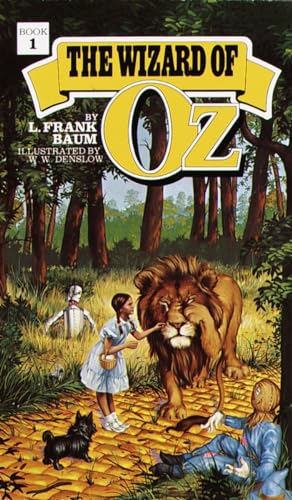
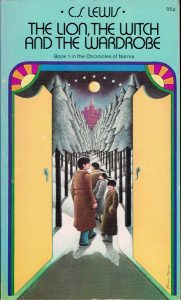
The earliest D&D gamers obviously played with the merging of real-world and fantasy realms. Dave Arneson’s Blackmoor campaign featured any number of characters who were closely related to the players playing them, including Mike Carr’s Bishop Carr, David Fant’s Bishop Fant, Richard Snider’s Brother Richard the Flying Monk, and many others. The idea faded by the time D&D was published, but it’d quickly return in the earliest media derived from the game.
That began with Andre Norton’s Quag Keep (1978), where players of Dungeons & Dragons were transported to the world of Greyhawk as their adventuring characters. Joel Rosenberg’s Guardians of the Flame (1983-1995+) had a similar premise, with the biggest change being that the players could die in the fantasy world! The Dungeons & Dragons cartoon (1983-1985) brought the idea to even more mass-market attention, albeit through the intermediary of a D&D–themed roller coaster. The Realm (1986-1991) from Arrow and later Caliber Comics should probably be placed in the same category: though its protagonists aren’t roleplayers (and indeed scoff at “D&D freaks”), the fantasy realm they enter seems clearly derived from FRPG adventuring and, as in Guardians of the Flame, the consequences of enslavement, corruption, or even death are very real.
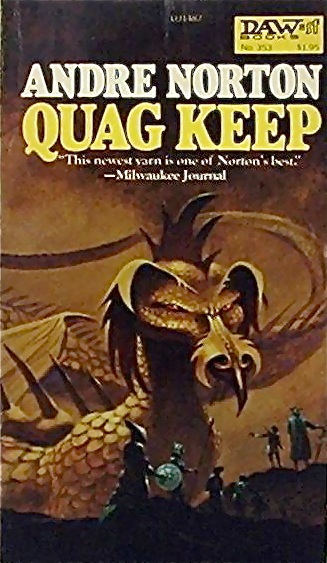
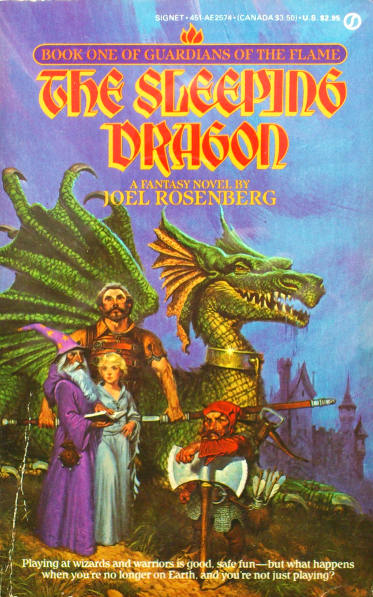
But just as had occurred in fantasy literature a decade earlier, D&D was stepping away from portal fantasies by the late ’80s. One can suspect that the Satanic Panic had something to do with it, as everything from William Dear’s The Dungeon Master (1984) to Jack Chick’s Dark Dungeons (1984) was hysterically claiming that D&D players couldn’t distinguish reality from fantasy. But it just as likely resulted from fantasy worlds gaining their own substance: they began to be seen as richly developed settings, without the need for them to be compared to our own.
This can perhaps be seen best in how D&D reversed the portal fantasy trope as its worlds of adventure gained sufficient substance. Where Dave Arneson had players recreate themselves in the fantasy world of Blackmoor, Gary Gygax’s players instead took their fantasy characters from Greyhawk to the Old West and World War II. These reverse portals soon appeared in print, in adventures such as EX1: Dungeonland (1983), where D&D characters journeyed to the original portal fantasy realm, Alice’s Wonderland, and in “The City Beyond the Gate” for Dragon #100 (August 1985), where they visited modern-day London.
Though roleplaying’s early flirtations with portal fantasy quickly faded, the subgenre would occasionally make a return outside of the realm of D&D, primarily through licensed products. Amber Diceless Role-Playing (1991) was the first major RPG with its premise centered on portal fantasy, as Corwin famously journeyed from the modern world to fantasy realms in Nine Princes in Amber (1970), but the RPG never focused as much on that concept as that first novel. Other RPGs, gamebooks, and supplements have taken players to famous portal-fantasy realms such as Narnia, Oz, and Wonderland. The Realm even got a game based on D&D 5e (2014), Onyx Path’s Legendlore (2021). Even the various John Carter adaptations can perhaps be considered portal fantasy, from Heritage Model’s pseudo-RPG, John Carter, Warlord of Mars (1978), to Modiphius’ modern John Carter of Mars (2018) RPG for their 2d20 system. Even more recently, isekai stories have made their way into licensed Japanese RPGs. But these licensed games remain the few major portal-FRPGs in the modern field.
With one major exception.
That exception comes courtesy of UK writer and game designer Kieron Gillen, who authored the DIE comic (2018-2021) and DIE: The RPG (2022) in parallel. The comic was a classic story of FRPG players dragged into the fantasy land of their game and often the worst for it. The game then allowed any roleplayer to create their own damaged gamer and then transport them into a fantasy realm. It was a full circle reinvention of some of the earliest tropes of FRPG literature, retold for the 21st century.
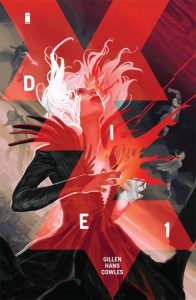
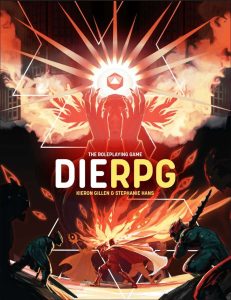

I’ll say this: publish more of these books and I will buy them. I can’t get enough of game history, especially the way you present it. I lived through those years so there’s a wonderful aroma of nostalgia for me in it.
Definitely in process! My Traveller history, _This is Free Trader Beowulf_ should be out in print this month. I’ve handed off four volumes of _Designers & Dragons Origins_, which are D&D product histories, to Evil Hat, and I’m working on Designers & Dragons: The ’10s and Designers & Dragons: Lost Histories, which will be more company histories.
With the Isekai boom in Japan, there have been a few portal fantasy RPGs from there as well. The licensed Konosuba RPG (which recently received an English translation), includes rules for someone who was brought from the modern world.
There’s also a Log Horizon licensed RPG, but that hasn’t received an official translation, so I can’t speak as how the game handles the topic of playing people from our world who are trapped in the semi-MMO within the TTRPG itself.
Thanks! Another great datapoint on modern-day portal fantasies!
As a fan of literally all the portal fantasy books and games you mentioned, I’m enjoying the resurgence of isekai and litRPG. I must check out DIE/RPG.
I reread the comic while working on this piece, and it remains terrific. (Better when read as a whole, in fact.)